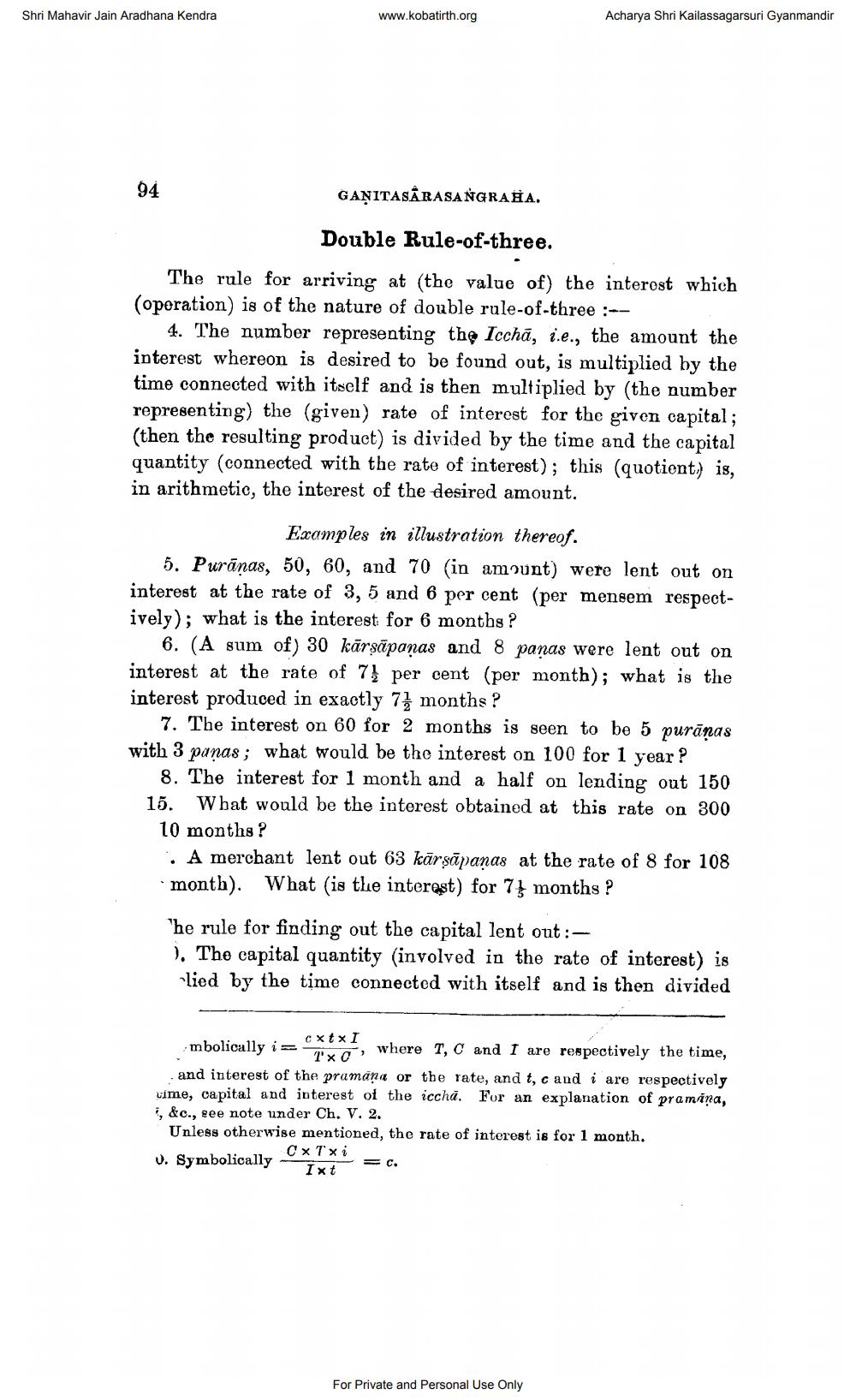________________
Shri Mahavir Jain Aradhana Kendra
94
www.kobatirth.org
GANITASARASANGRAĦA.
Double Rule-of-three.
The rule for arriving at (the value of) the interest which (operation) is of the nature of double rule-of-three :--
4. The number representing the Iccha, i.e., the amount the interest whereon is desired to be found out, is multiplied by the time connected with itself and is then multiplied by (the number representing) the (given) rate of interest for the given capital; (then the resulting product) is divided by the time and the capital quantity (connected with the rate of interest); this (quotient) is, in arithmetic, the interest of the desired amount.
Examples in illustration thereof.
5. Puranas, 50, 60, and 70 (in amount) were lent out on interest at the rate of 3, 5 and 6 per cent (per mensem respectively); what is the interest for 6 months?
6. (A sum of) 30 kārṣāpanas and 8 panas were lent out on interest at the rate of 7 per cent (per month); what is the interest produced in exactly 7 months?
7. The interest on 60 for 2 months is seen to be 5 purāṇas with 3 panas; what would be the interest on 100 for 1 year?
8. The interest for 1 month and a half on lending out 150 15. What would be the interest obtained at this rate on 300 10 months?
. A merchant lent out 63 karṣāpaṇas at the rate of 8 for 108 month). What (is the interest) for 7 months ?
cxtx I
Tx0
Acharya Shri Kailassagarsuri Gyanmandir
The rule for finding out the capital lent out:
). The capital quantity (involved in the rate of interest) is lied by the time connected with itself and is then divided
mbolically i=
where T, C and I are respectively the time, and interest of the pramana or the rate, and t, c and i are respectively time, capital and interest of the iccha. For an explanation of pramiņa, , &c., see note under Ch. V. 2.
Unless otherwise mentioned, the rate of interest is for 1 month. V. Symbolically
CxTxi Ixt
= c.
For Private and Personal Use Only




